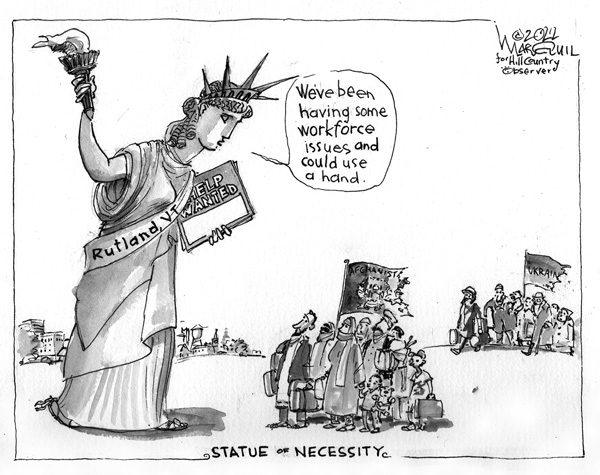Editorial April 2022
E D I T O R I A L
In redistricting ruling, a glimmer of hope
As this issue goes to press on the night of March 31, a state judge has just tossed out New York’s new congressional and legislative district maps, casting the state’s nascent election year into turmoil.
Justice Patrick McAllister ruled that the new maps, passed by the Legislature’s Democratic majority in early February and signed into law by Gov. Kathy Hochul, amount to partisan gerrymandering that violates the state constitution.
The judge, ruling in a legal challenge brought by state Republican leaders, directed the Legislature to come up with a new set of “bipartisan” maps by April 11. If that effort fails, he warned, the court will appoint its own expert to redraw the state’s political districts.
Hochul and other top Democrats have vowed to appeal. In the meantime, with a June primary date looming, candidates are already circulating petitions in the new districts the Legislature drew.
As a pair of stories in this issue details, those new districts would boost the prospects of Democratic candidates across the state as a whole. But locally, they’d also strengthen the grip of some Republican incumbents.
Under the plan adopted by the Legislature, Democratic U.S. Rep. Paul Tonko’s heavily Democratic Albany-area district would be extended northward to Glens Falls and Queensbury. It would remain safely Democratic but a bit less so.
Meanwhile, Democratic Rep. Antonio Delgado’s toss-up district would become more reliably Democratic by extending it westward to encompass Binghamton and Utica – and by moving some of its most heavily Republican turf into the district of Republican Rep. Elise Stefanik. And Stefanik’s district, already strongly Republican, would become overwhelmingly so.
The same map-making tactics have been perfected by Republicans in states like Texas where the GOP controls all the levers of power: Where possible, dilute the power of the opposition party’s voters by spreading them among multiple districts. And where that’s not possible, pack as many of them as possible into one district.
Whether any of this violates New York’s constitution is a matter the state’s appellate courts will settle in the weeks ahead. But there’s no question it meets the definition of gerrymandering.
There’s also no question that it’s corrosive to our system of representative democracy, because gerrymandered political maps tend to reduce the number of competitive political districts, leaving entrenched incumbents in both parties. And incumbents in heavily partisan districts are less likely ever to deviate from the ideological orthodoxy of their party, because apart from scandal, the only threat to their re-election is an intraparty primary.
Imagine -- we can still dream, can’t we? -- that Justice McAllister were to appoint an expert who redrew New York’s political maps to maximize the number of competitive districts. Lots more elected officials would need to appeal to the moderate voters who decide close elections. These politicians would need to be more pragmatic and more representative of a broad swath of their constituents – the antidote to our era of polarization.
Now consider what happens if an appeals court allows the state’s new political maps to remain intact. Delgado’s district might still remain somewhat competitive, but virtually every other incumbent House member in New York would be safe for the next decade. And if you’re a conservative in Tonko’s district or a liberal in Stefanik’s, you’d still be free to howl at the moon, but your elected representative would care less than ever.


